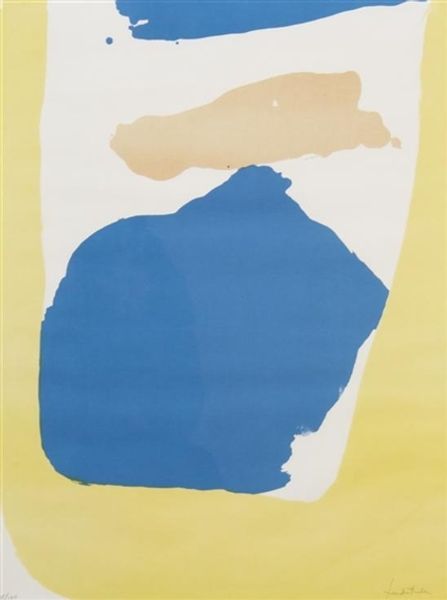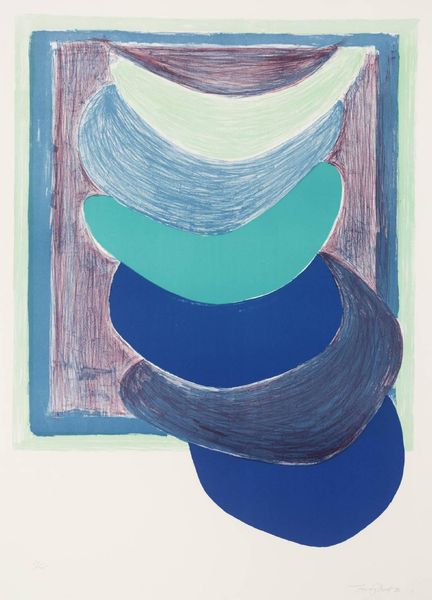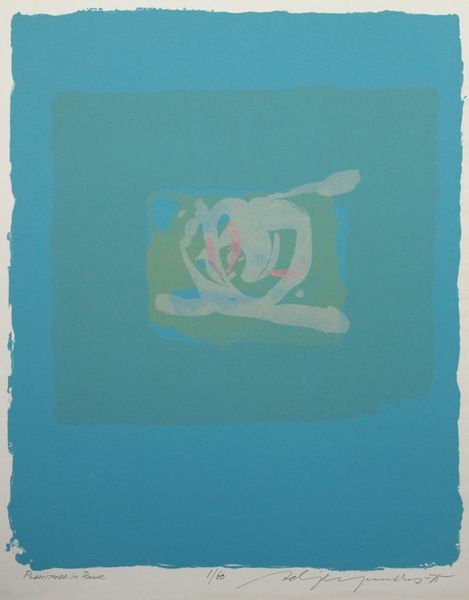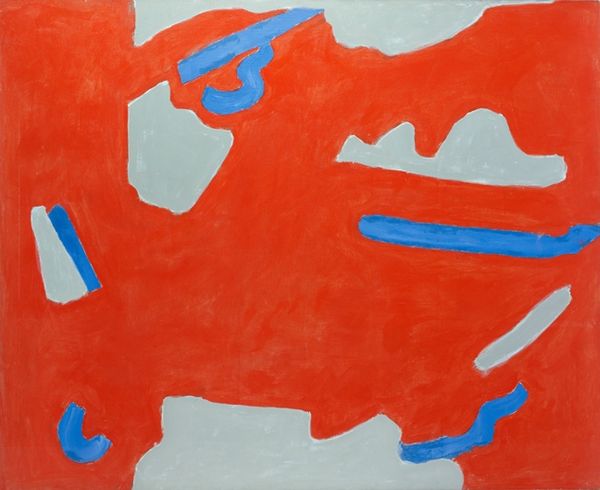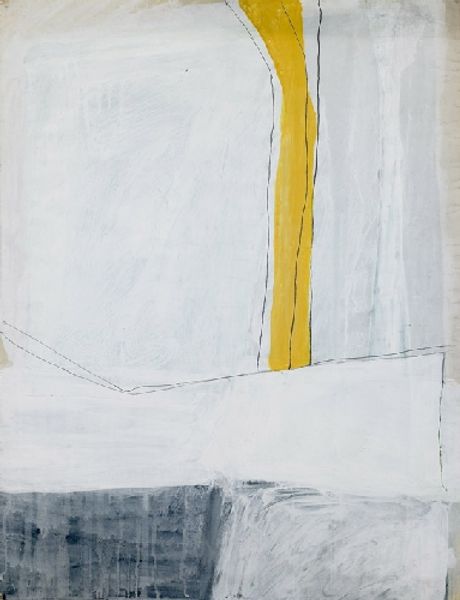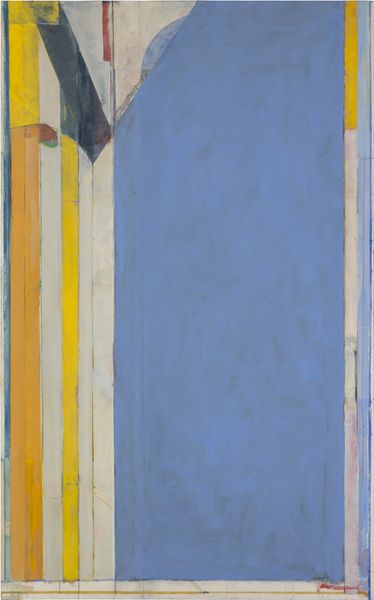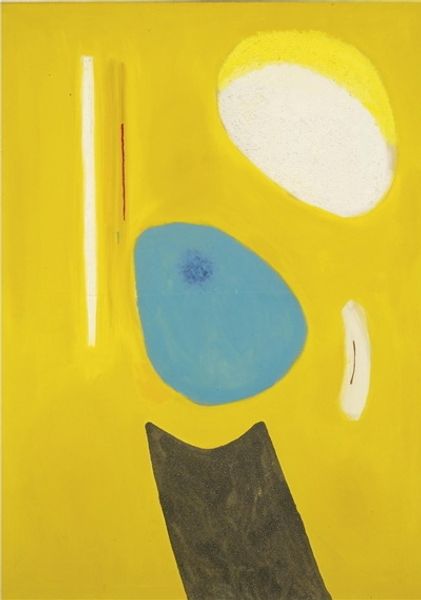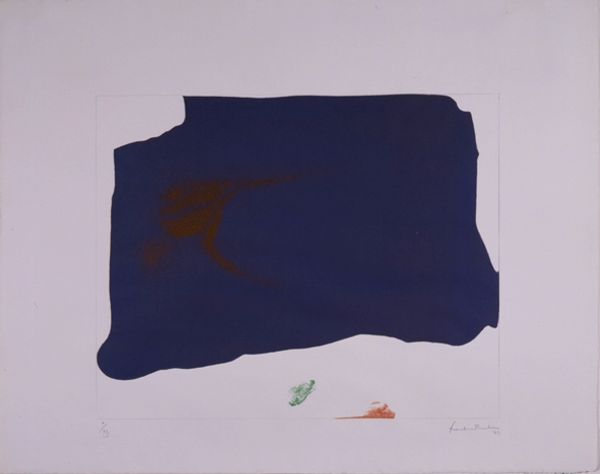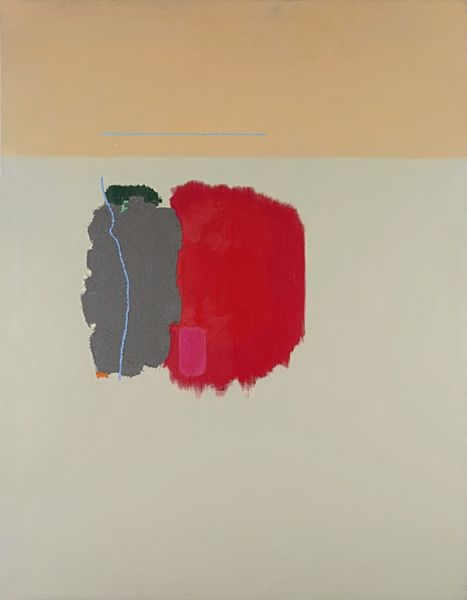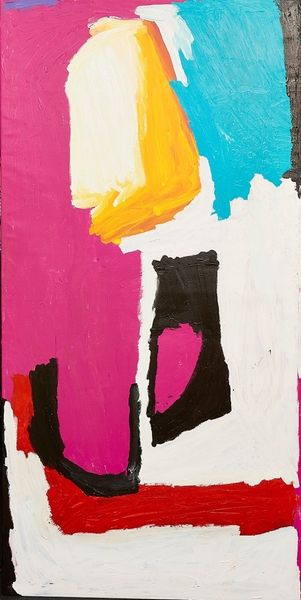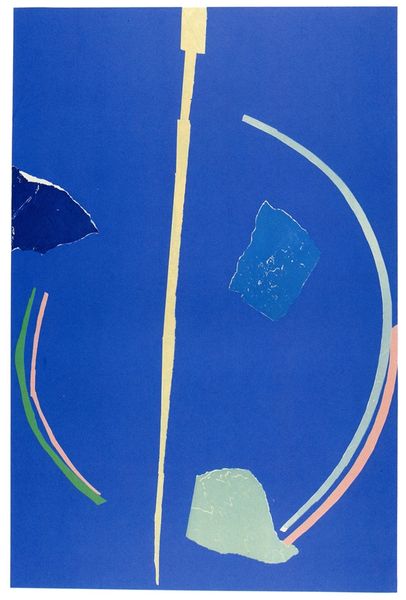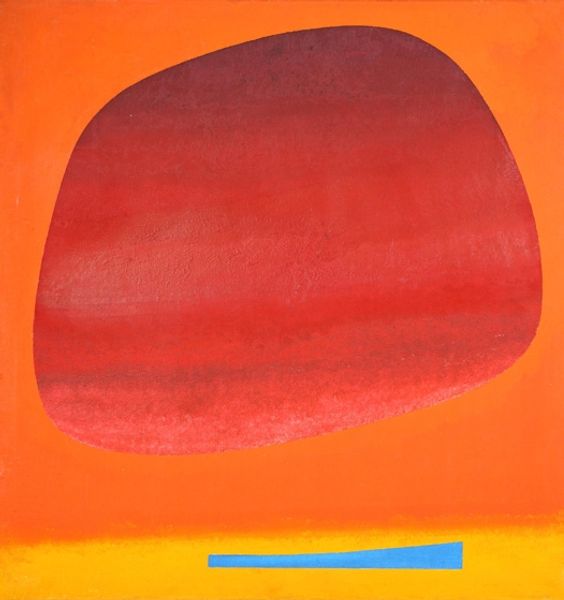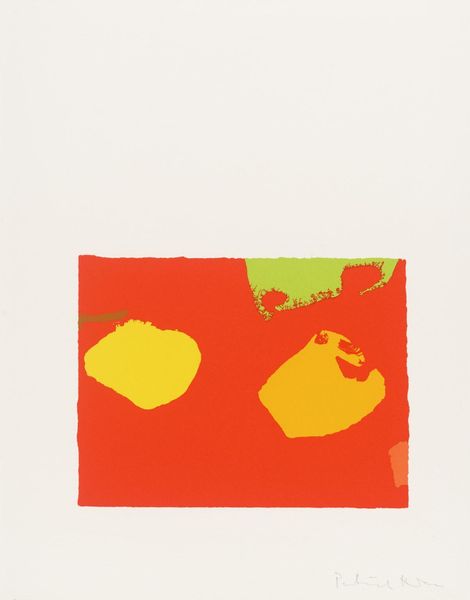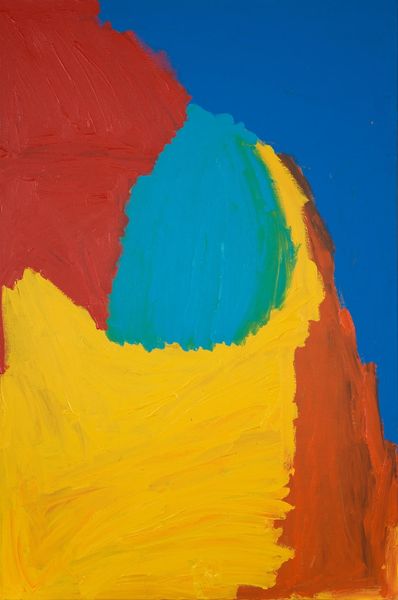
painting, acrylic-paint
#
abstract-expressionism
#
painting
#
colour-field-painting
#
acrylic-paint
#
form
#
abstraction
#
line
#
modernism
Copyright: Friedel Dzubas,Fair Use
Curator: "Sartoris," created in 1963 by Friedel Dzubas. An example of color field painting done in acrylic on canvas. The artwork strikes me as deliberately sparse in its composition. How does it hit you? Editor: It feels strangely calming, almost meditative. The huge field of off-white, with the three color blocks. The soft, diffused color fields contrast beautifully with the starkness of the composition. Curator: Well, Dzubas arrived in New York during a vibrant period of abstract expressionism, didn't he? His approach here seems to be shedding the more angst-ridden and action-packed components, channeling instead a more pared-down aesthetic. He's simplifying to amplify the relationship between the colors themselves, creating these areas of almost pure sensation. Editor: Yes! It invites us to contemplate the intersection of color and emotion. The blocks of color might be quite simple on their own, but how they come together invites interpretation and connection. But it does also evoke something in art history. Barnett Newman explored the expressive capacity of color fields in the context of postwar grief, particularly in pieces from his "Stations of the Cross" series. Is Dzubas’ work perhaps an exploration into these similar sentiments during this period in American history? Curator: That's certainly an angle. I think the '60s represent this societal shift; that yearning for something brighter that can also recognize its socio-political background. The colour choices strike me as considered, the vibrant orange placed at odds against the subdued pastel-esque colours that lie closer to a horizon. Editor: True. There’s something in the large blank space separating these points of color that reflects the complexities of societal emotions and perhaps an insight into this struggle. Maybe a call for dialogue to bridge social, political, and even emotional divides during times of tension. It encourages a reevaluation of art's societal significance as an outlet for reflecting shared struggles. Curator: An outlet which speaks to a very specific modernist drive, but an argument with merit. Thanks for helping to unpick that! Editor: Likewise. This piece’s understatedness makes its underlying social awareness all the more affecting.
Comments
No comments
Be the first to comment and join the conversation on the ultimate creative platform.
